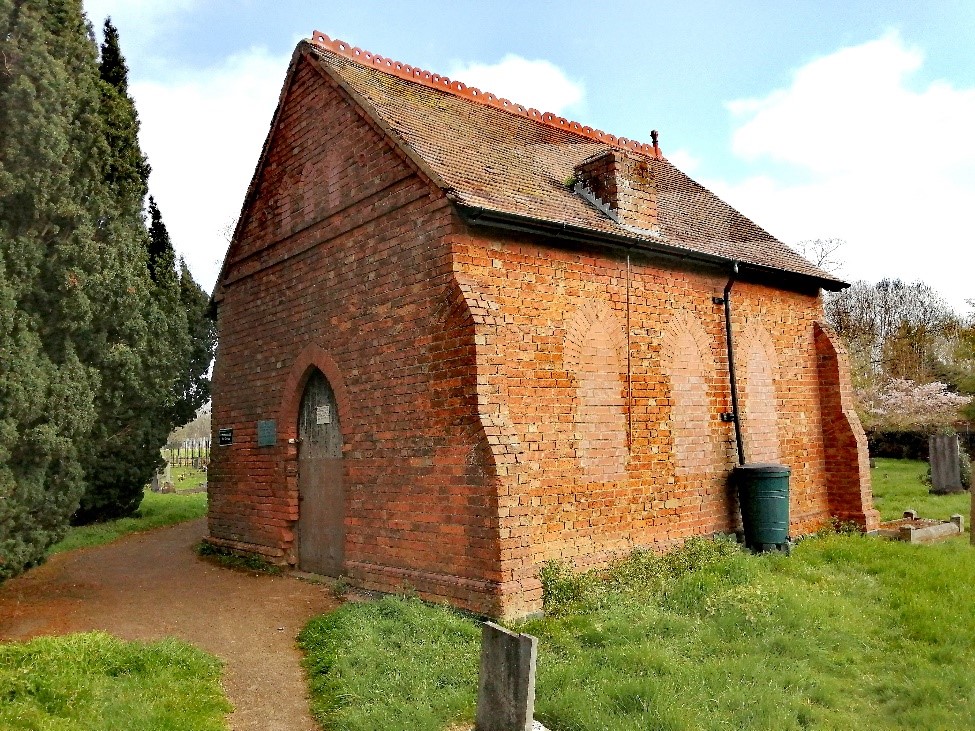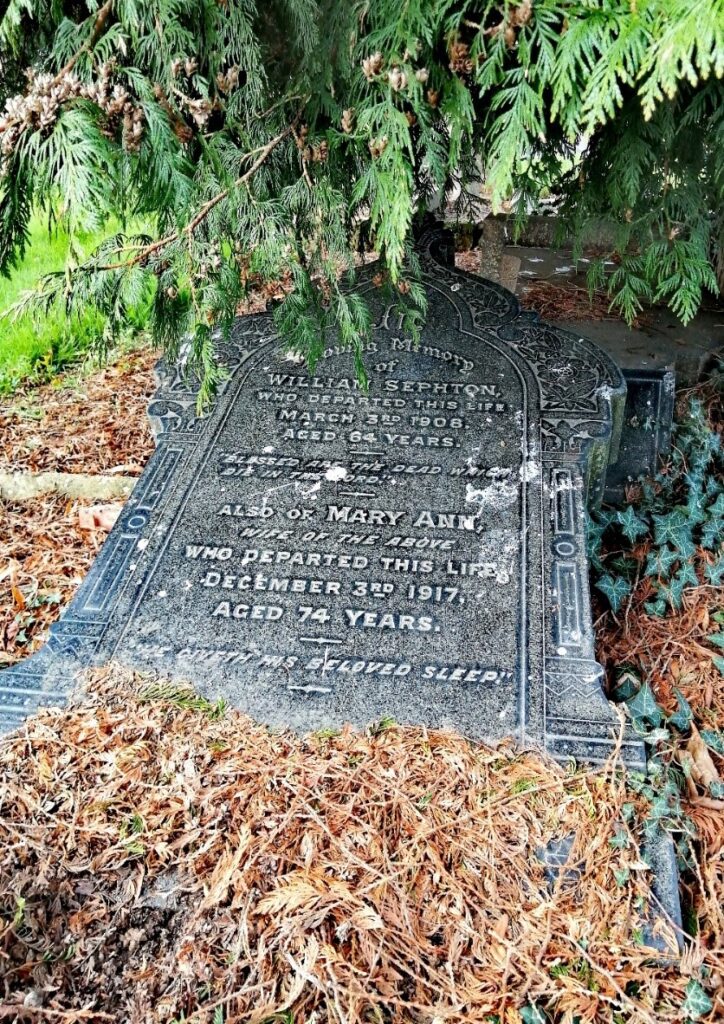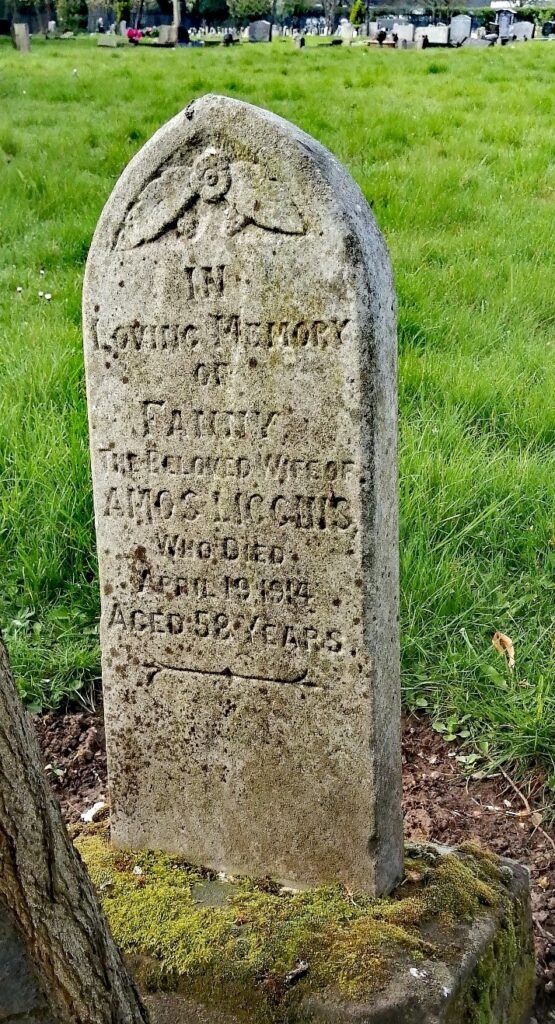CovSoc member, Peter Hunter, writes..
This month, the second in the series of articles inspired by places around Coventry that I visit as I jog around town takes me to Walsgrave Cemetery. I have to admit that I love a good cemetery, the quiet, the peace and always some fascinating stories behind the gravestones and memorials.
As Coventry expanded in the later part of the 19th century and the first part of the 20th century, it inherited three cemeteries from adjacent parishes / districts. Windmill Rd. and St Paul’s Holbrooks from Foleshill and Walsgrave from Walsgrave on Sowe. These cemeteries regularly feature on my runs and this time round the focus is on the smallest of these, Walsgrave cemetery off Woodway Lane. It is one of those places that if you didn’t have a reason for knowing it was there, you’d never know that it was. The Cemetery lies to the south of the southern part of Sowe Common, just south of the M6, behind houses on Woodway Lane, accessed by a driveway on the edge of the common from Woodway Lane. It isn’t visible from the road.
The cemetery was the initiative of the Burial Board of Walsgrave on Sowe Parish and was opened in 1893, with the first interment being that of Mary Quinney. The opening of the cemetery and Mary’s interment is celebrated on a plaque on the tiny cemetery chapel. The cemetery became the responsibility of Coventry City Council in 1932 when the parish became part of the city.

One feature of all of these cemeteries inherited by Coventry from surrounding parishes is that each possess a small chapel. The one at Walsgrave is the smallest of them. Every time I visit this cemetery, the sight of the chapel leaves me with a sense of sadness. The building is tiny and would only ever have accommodated a handful of mourners. I haven’t found any photographs of the building prior to it being bricked up. If anyone is aware of photographs, I’d be delighted if they could let me know. The fate of the chapel has been to be bricked up and probably used as storage for City Council grounds maintenance staff. Whilst this is a sad state of affairs, what are the alternatives? Whilst Historic Coventry Trust have done / are doing a great job with the Chapels in London Rd. Cemetery, the small chapels in these old peripheral cemeteries have all suffered a similar fate, being neglected from lack of use and secured and used for storage. The dilemma is an obvious one, we’d all love the chapels to be restored and maintained, but at what cost and to what use can they be put?

I was surprised when exploring Walsgrave Cemetery as to how few older gravestones and memorials remain. Those that remain tend to be grouped around the chapel building. It appears that the cemetery has been “tidied” at some time in the past, with old headstones removed. There are however a few remaining and they offer tantalizing links to the area’s past. I have to declare an interest here in that I’ve always lived in north Coventry and my family and my wife’s family are from around there, so I’m always on the lookout for familiar names on the memorials.
One of the names on the remaining memorials here that is most familiar to me is Sephton. The Sephton family were well known locally as boatbuilders and they ran a boat building and repair yard at Tusses Bridge, across the canal from what was the Elephant and Castle public house. They also had boat repair and building facilities at Sutton Stop. Members of the Sephton family also kept various public houses in the area over many years and there are still members of the Sephton family in the area today. Walsgrave cemetery is only a couple of hundred yards from the Oxford Canal, so I’m assuming a link between the canal focused Sephton family and the memorial in the churchyard, although I haven’t had the opportunity to research this properly.

One feature of the cemetery that interested me was that in the area with the oldest memorials, there were numerous examples of small, simple unobtrusive headstones from the late 19th century through to around 1920. I’m intrigued as to what the story behind these is. The memorial stones look as though they are made of cast concrete mounted in a sandstone block. Was it a headstone used by a local undertaker / memorial mason? The memorial to Amos Liggins (below) from 1914 is an example of the memorial stone that I’m talking about. It isn’t a design that I’m familiar with. Any ideas?

At some time in the not – too – distant past, the cemetery was extended, virtually doubling its size. Many of the recent burials have been members of the city’s Muslim community. However, there have been no new burials for a decade or more other than in existing graves where there has been capacity for further interment.
Coventry Family History Society have obtained burial records for Walsgrave Cemetery from Coventry Bereavement Services for the period from 1893 to 1994. These records have been photographed and are currently being transcribed and should be available for reference in the near future.
So if you’re out and about in this part of town, walking the Oxford Canal or exploring Sowe Common, it might be worth dropping in and taking a look round Walsgrave Cemetery. You never know what you might find.
